#this transient life 1970
Text
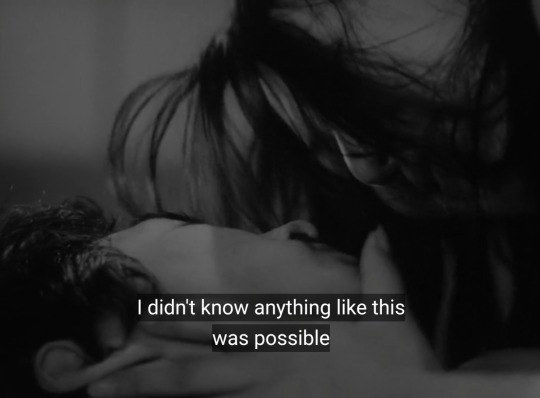
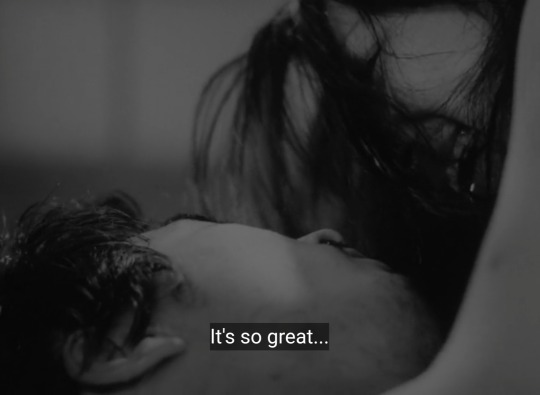


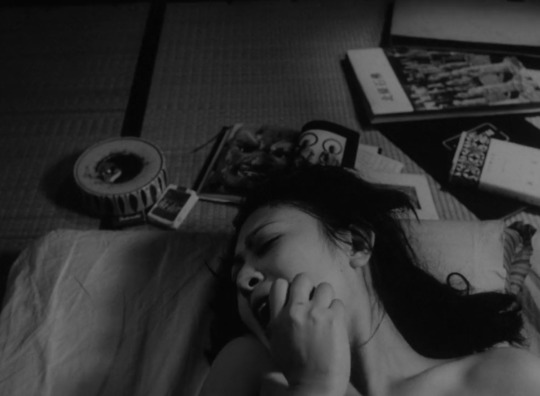



this transient life (1970) dir. akio jissoji
14 notes
·
View notes
Photo
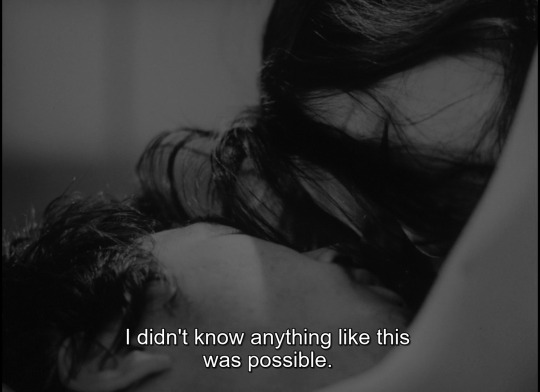
Akio Jissoji
- This Transient Life
1970
#実相寺昭雄#無常#Akio Jissoji#THIS TRANSIENT LIFE#japanese film#atg#art theatre guild#buddhism#1970#akio jissôji
164 notes
·
View notes
Text
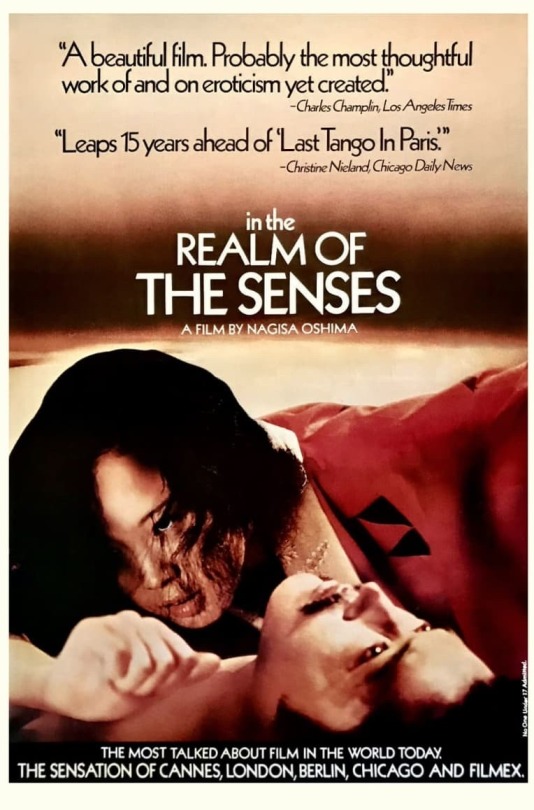

In the Realm of the Senses (1976) dir. Nagisa Ōshima
This Transient Life (1979) dir. Akio Jissôji
#in the realm of the senses#this transient life#nagisa oshima#akio jissoji#Japan#1970s#sexuality#theology#double bill suggestions
3 notes
·
View notes
Text
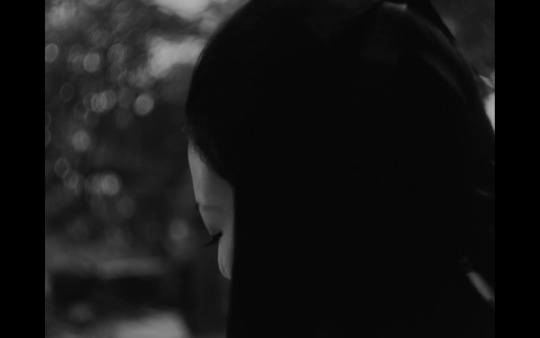




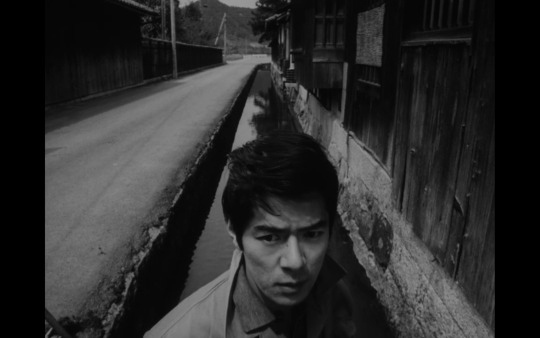

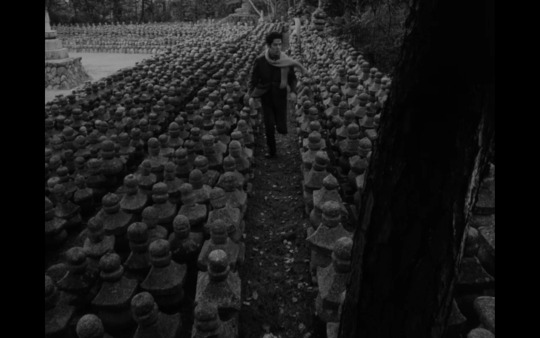

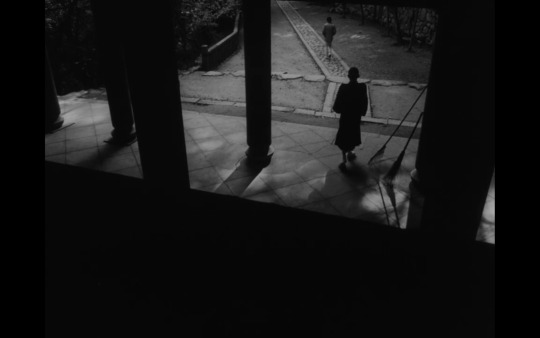
Mujō 1970
0 notes
Text
Excerpts from the article:
Because it’s clear that being “the last public space” isn’t a privilege. It’s a sign that something has gone terribly wrong.
At the time, countless articles asked if new technology meant “the death of the public library.” Instead, the institution completely transformed itself. Libraries carved out a new role providing online access to those who needed it. They abandoned the big central desk, stopped shushing patrons, and pushed employees out onto the floor to do programming. Today, you’ll find a semester’s load of classes, events, and seminars at your local library: on digital photography, estate planning, quilting, audio recording, taxes for seniors, gaming for teens, and countless “circle times” in which introverts who probably chose the profession because of their passion for Victorian literature are forced to perform “The Bear Went over the Mountain” to rooms full of rioting toddlers.
In the midst of this transformation, new demands began to emerge. Libraries have always been a welcoming space for the entire community. Alexander Calhoun, Calgary’s first librarian, used the space for adult education programs and welcomed “transients” and the unemployed into the building during the Depression. But the past forty years of urban life have seen those demands grow exponentially.
In the late 1970s, “homelessness” as we know it today didn’t really exist; the issue only emerged as a serious social problem in the 1980s. Since then, as governments have abandoned building social housing and rents have skyrocketed, homelessness in Canada has transformed into a snowballing human rights issue. Meanwhile, the opioid crisis has devastated communities, killing more than 34,000 Canadians between 2016 and 2022, according to the Public Health Agency of Canada. And the country’s mental health care system, always an underfunded patchwork of services, is today completely unequipped to deal with demand. According to the Canadian Institute for Health Information, from 2020 to 2021, Canadians waited a median of twenty-two days for their first counselling session. As other communal support networks have suffered cutbacks and disintegrated, the library has found itself as one of the only places left with an open door.
When people tell the story of this transformation, from book repository to social services hub, it’s usually as an uncomplicated triumph. A recent “love letter” to libraries in the New York Times has a typical capsule history: “As local safety nets shriveled, the library roof magically expanded from umbrella to tarp to circus tent to airplane hangar. The modern library keeps its citizens warm, safe, healthy, entertained, educated, hydrated and, above all, connected.”
That story, while heartwarming, obscures the reality of what has happened. No institution “magically” takes on the role of the entire welfare state, especially none as underfunded as the public library. If the library has managed to expand its protective umbrella, it has done so after a series of difficult decisions. And that expansion has come with costs.
132 notes
·
View notes
Note
Okay, so I found a list of canon incest on Mydramalist.com (here https://mydramalist.com/list/61GmGYn3), obviously it only containts movies/TV shows from Asia. What I wanted is for your followers to confirm if all of those is blood-related incest? Cause it's supposed to be blood-related, for fauxcest there's a different list, but also errors happen, and I already found one, Ireland 2004 is fauxcest, as least with main characters (who think they might be brother and sister). Copying the rest of the list here:
Ashes of love (2018) - cousins
Kissing cousin (2016) - cousins
Moon Lovers: Scarlet Heart Ryeo - brother/sister, this one I've seen on your blog so it's confirmed to be blood-related incest
My man (2014) - father/daughter
Graupel Poetry (2012) - brother/brother
Just like today (2011) - ?
Mitsu no aji (2011) - uncle/niece, this one I've seen and confirm it's blood-related, at least nothing to suggest otherwise is mentioned and they say they cannot get married (non-blood uncle/niece would be able to get married in Japan)
Himitsu (2010) - father/daughter
Forbidden Love (2008) - brother/brother
Innocent Love (2008) - brother/sister
My sister, my love (2007) - in your masterlist, so I can count it as confirmed?
90 days of love (2006) - cousins
Withered in a Blooming Season (2005) - brother/sister
Temptation of wolves (2004) - brother/sister
Damo (2003) - ?
Old boy (2003) - father/daughter, brother/sister, this one is popular so we can be safe it's confirmed
The Rose (2003) - brother/brother, brother/sister, for this one I actually read spoilers and (spoilers obviously) confirm there's incest but the endgame couple is fauxcest
Sora Kara Furu Ichioku no Hoshi (2002) - brother/sister
Jan Dara (2001) - ?
Secret (1999) - father/daughter
Kou Kou Kyoushi (1993) - father/daughter
Kou Kou Kyoushi (1993) (movie) - father/daughter
Himiko (1974) - brother/sister, I've seen and confirm
This Transient Life (1970) - brother/sister
Funeral Parade of Roses (1969) - ?
Profound Desires of the Gods (1968) - ?
From myself, taking the chance, add
27. Love's circle or resentment (2016) - brother/sister, two couples are suspected to be half-siblings (spoilers) one is really related and the other isn't (side note I cried so much in the end)
If anyone could confirm or refute the blood relation I'd be thankful :)
I hope everyone sees this. Please forward to anyone you know who watches Asian dramas and might be able to help.
Plus, I would love to hear more about what's on this list if anyone can rec.
13 notes
·
View notes
Text
How San Francisco became a queer mecca
In 1848 the population of San Francisco was 800 people. The gold rush led to a population boom, and in 1850 the city had swelled to 35,000 people. These new residents were miners and fortune seekers, and over 95% of whom were young men. They also came from variety of nationalities and cultures.
This dramatic increase in population from diverse backgrounds, and a population that is fairly transient, contributed to a lawless environment where an ‘anything goes’ attitude prevailed. With the unbalanced gender ratio, social conventions about gender were also subverted. Many men took roles traditionally assigned to women. It became common for men to wear female clothing and for men to dance with men. This relaxed atmosphere also led to numerous cases of women dressing in men’s clothing in order to increase their stature.
As the city became established, crackdowns on the perceived anarchy were undertaken. Cross-dressing was outlawed in 1863 as part of anti-vice campaigns to restore public decency. As regulations increased, San Francisco's queer culture moved to the red-light district known as the Barbary Coast where bars, nightclubs, and entertainment flourished, along with same-sex prostitution and female impersonators.
During World War I & World War II, it became impractical to for the U.S. military to go through its full practice of convening a court-martial, imprisonment and dishonorable discharge for service members found to be homosexual or to have engaged in homosexual conduct. To expedite things during the wars, the U.S. Navy implemented a system of issuing an administrative discharge and offloaded these men at port cities, many were offloaded at Fort Mason in San Francisco.
This process of discharge wasn’t confidential, which meant they were now identified as “known homosexual,” and discharge would follow the men around. Consequently, many stayed in San Francisco where a community of gays was established. The LGBT community established itself in the neighborhood of North Beach.
Despite some raids targeting gay bars, San Francisco was considered relatively safe for queer people compared to other American cities due to its more permissive culture and an open gay culture that wasn’t underground.
The 1950′s beat culture in San Francisco was a rebellion against middle class values, which drew many who were part of non-mainstream cultures, including queer people. This concentration of gays and lesbians led to the founding of the Daughters of Bilitis (first lesbian civil and political rights organization in the United States) in 1955, and the Mattachine Society (an early national gay rights organization) moved their headquarters from Los Angeles to San Francisco in 1956.
In 1961, José Sarria became the first openly gay candidate in the United States to run for public office, running for a seat on the San Francisco Board of Supervisors. Sarria didn’t win, but he received enough votes that it surprised political pundits and created the idea of a gay voting bloc in the city, and from then on, politicians in San Francisco running for office would knock on the doors of the gay community.
The first association of gay businesses, the Tavern Guild, was created by San Francisco gay bar owners in 1962 in response to police harassment and closing of gay bars. Other gay organizations formed in the city over the course of the decade.
The June 1964 edition of Life magazine included an article titled "Homosexuality In America" which is the first time a national publication reported on gay issues. The article described San Francisco as "The Gay Capital of America" and this inspired many gay people from around the nation to move to the city.
The 1969 Stonewall riots in New York inspired queer people around the country to fight for queer rights, San Francisco was the West Coast center for these activities. In the 1970′s, the queer community in San Francisco became more prominent and in November 1977, Harvey Milk was elected as the first openly gay politician in the city when he became a member of the San Francisco Board of Supervisors. Harvey Milk asked Gilbert Baker to make a symbol to unite the queer community and Harvey created the rainbow flag which first flew at the San Francisco Pride in June 1978.
When Milk was assassinated in November 1978, Harry Britt ran for office and became the second openly gay elected member of the Board of Supervisors. Britt wrote and passed domestic partnership legislation.
The AIDS epidemic began in 1981 and decimated San Francisco’s gay & bi community as about 20,000 people died within 15 years.
San Francisco continued to attract queer people and they created more organizations and started multiple queer publications. As awareness of transgender identities increased, the first Trans Pride march was held in San Francisco in 2004.
Also in 2004, San Francisco mayor Gavin Newsom had city hall issue marriage licenses to same-sex couples. Couples traveled from all over the United States and from other countries to be married. This lasted only one month when it was ruled Newsom didn’t have authority to disregard state laws on marriage.
In 2007, Theresa Sparks, an openly transgender person, was elected president of the San Francisco Police Commission
Unfortunately for queer people in San Francisco and other parts of the state, in 2008 California voters passed Prop 8, a state constitutional amendment titled Eliminates Right of Same-Sex Couples to Marry Act. The Church of Jesus Christ of Latter-day Saints donated $20 million to campaign for its passage.
Same-sex marriages in California resumed in 2013 when the courts found that banning same-sex marriage violates equal protection under the law.
41 notes
·
View notes
Text

..Akio Jissoji - This Transient Life - 1970..
3 notes
·
View notes
Text
i love you Love-Colored Magic i love you The Witches Ball ~ Magus i love you Vessel of Stars ~ Casket of Star i love you Wondrous Romance ~ Mystic Square i love you Crimson Maiden ~ Crimson Dead!! i love you Doll's Story ~ Doll of Misery i love you Grimoire of Alice i love you Mystic Dream i love you Peaceful Romancer i love you Mystic Square OST i love you Beloved Tomboyish Girl i love you Shanghai Alice of Meiji 17 i love you Voile, the Magic Library i love you Locked Girl ~ The Girl's Secret Room i love you The Maid and the Pocket Watch of Blood i love you Septette for the Dead Princess i love you Centennial Festival for Magical Girls i love you UN Owen Was Her? i love you Diao Ye Zong ~ Withered Leaf i love you The Doll Maker of Bucareste i love you Hiroari Shoots a Strange Bird ~ Till When? i love you Bloom Nobly, Cherry Blossoms of Sumizome ~ Border of Life i love you Border of Life i love you Maiden's Illusory Funeral ~ Necro-Fantasia i love you Necrofantasia i love you Night Falls ~ Evening Star i love you Illusionary Night ~ Ghostly Eyes i love you Stirring an Autumn Moon ~ Mooned Insect i love you Deaf to All but the Song i love you Love-colored Master Spark i love you Lunatic Eyes ~ Invisible Full Moon i love you Voyage 1969 i love you Gensokyo Millennium ~ History of the Moon i love you Flight of the Bamboo Cutter ~ Lunatic Princess i love you Voyage 1970 i love you Reach for the Moon, Immortal Smoke i love you Oriental Dark Flight i love you Adventure of the Lovestruck Tomboy i love you Flowering Night i love you Wind God Girl i love you Poison Body ~ Forsaken Doll i love you Gensokyo, Past and Present ~ Flower Land i love you Higan Retour ~ Riverside View i love you Fate of Sixty Years i love you The Gensokyo The Gods Loved i love you Akutagawa Ryunosuke's Kappa ~ Candid Friend i love you Fall of Fall ~ Autumnal Waterfall i love you Youkai Mountain ~ Mysterious Mountain i love you Faith is for the Transient People i love you The Venerable Ancient Battlefield ~ Suwa Foughten Field i love you Tomorrow Will Be Special, Yesterday Was Not i love you Native Faith i love you Mountain of Faith OST i-
6 notes
·
View notes
Photo

Movies I watched (and books I read) this Week #101
First watch: Věra Chytilová’s seminal New Czech Wave Comedy Daisies, done during mid-60′s short window of permissiveness. An irreverent, Richard Lester surrealist romp of two carefree young women who don’t abide by any rules, except their own whims. Senseless mayhem, nihilist slapstick and constant eating, ending with a Mad Hatter Feast of pie fights and destruction. The Soviet Czech government banned the film because it promoted ‘Food waste”. 5/10.
🍿
Fellini's Casanova, another of his 1970′s bloated, over-the-top, exaggerated Baroque classics. The story of the always horny, lecherous cocksman, whose life avocation was to fuck anything female, be it young, old, hunchbacks, ugly, fat, thin, even mechanical dolls. Traveling all over Europe with his sexually-stimulated mechanical bird and ridiculous girdle in pursuit of female benefactors, but who longed to be considered a serious intellectual, and not just a famous womanizer. The infamous Chesty Morgan was cast in the film, but her scenes were deleted from the final cut. 2nd re-watch after 40 years. (Photo Above). 3/10.
🍿
A blind viewing of an erotic Japanese New Wave film I never heard of, This Transient Life, part of the unique director Akio Jissoji’s ‘Buddhist Trilogy’. Jissoji apparently was known for his distinctive visual style which he used in horror films, children television and Sadomasochistic adult movies.
This beautiful but controversial 1970 story deals with Buddhist thought, family roles, religious art, obsession - and incest. It tells of an amoral young nihilist who fathers a child with his sister, even as he flirts with moral and philosophical values. Gorgeous black & white photography, constant camera movement - and social transgressiveness. It also touches on impotence, voyeurism, threesomes, suicide and murder. It ends with a climatic philosophical “duel” between a Buddhist monk and the ‘hero’, and a surrealistic dream scene involving a giant stone carp.
What a complex, strange experience - The surprising find of the week!
🍿
2 different foreign TV series:
🍿 The gift is a supernatural/fantasy Turkish TV series from 2019. I was under the influence when I saw the trailer for it (it felt longer), and also later when I watched the first episode. So I thought that this was one of the most visually-stunning productions I’ve seen in a long time, with superb stagecraft, surprising imagination, sophistication and modern uniqueness (quotes from my notes), original like ‘Close encounters of the third kind’. But as I watched the rest of season One, I realized that it was just an ordinary TV mystery of the Netflix kind. With lovely actress Beren Saat.
Kids, don’t do drugs. 2/10
🍿 Marseille, a French TV series about power, corruption and revenge in a mayoral succession struggle. Starring Gérard Depardieu (”The second highest grossing actor in the history of French Cinema behind Louis de Funès”, but also alleged-rapist).
I was attracted to it because of the mysterious Egyptian ear worm cover Ya Sidi, to which I listened dozens of times in this past week. However, of the series itself, I only watched the first episode.
🍿
See how they run, another Agatha Christie adjacent murder mystery, a pleasant new comedy starring the always-lovely Saoirse Ronan (as well as Harris Dickinson who I saw just last week in ‘Triangle of sadness’). A meta-classic British whodunnit playing around the 100th performance of ‘The Mousetrap’ in 1953. 7/10
🍿
My 3rd and 4th films by Ira Sachs (both with Greg Kinnear):
🍿 I was compelled to re-visit his low-key Frankie, the story of famous actress Isabelle Huppert who invited her family to a last Portuguese vacation, before she succumbs to cancer. It was my ‘Best film of the week’ about 5 months ago, but I now read it received mixed reviews upon its 2019 premiere. I can somehow see why: It’s a slow and melancholic art film, and the dynamics between the diverse characters are not very deeply explored. Still, the Sintra locations are magnificent and the final scene at the mountain top is transcendent.
🍿 Little Men is a quiet, humane drama about friendship of two 13-year-old boys in Brooklyn. It is now my favorite of his films. The boy who played the role of Tony, 14-year-old Michael Barbieri, was tremendous.
🍿
The new She said retells how the two female New York Times investigating reporters exposed Harvey Weinstein’s decade-long sexual abuse, thus launching the #metoo movement around the world. I wanted to like it very much, but like most ‘Based on a recent true story’ it started badly and only slightly improved. I hate the trumps, the Weinsteins and the Epsteins of the world with a passion, and I liked the fact that this was a feminist film done with mostly women at the helm, but ‘All the President’s Men’ it was not. Even though it was clearly an attempt to frame it as such.
🍿
Orson Welles X 2:
🍿 First watch: The stranger, Welles third feature film (after ‘Citizen Kane’ and ‘The Magnificent Ambersons’). He directed this Noir thriller to prove that he could make commercially viable films, and it did become his biggest box office success. It's a story about a Nazi refugee who hides in a small Connecticut town, and it was the first commercial film to use documentary footage from the Nazi concentration camps. Disappointingly mediocre. 3/10.
🍿“... How do you do, ladies and gentlemen? This is Orson Welles. I am speaking for the Mercury Theatre, and what follows is supposed to advertise our first motion picture..”
The Citizen Kane trailer, a four-minute, self-contained, "making of" promotional featurette, released in 1940 to promote his first film. Unlike other standard theatrical trailers of the era, it did not feature any footage of the actual film itself, but was a wholly original pseudo-documentary piece. It is considered to be a standalone short film, rather than a conventional "trailer".
🍿
Sr., a loving documentary by Robert Downey Jr. about his father, underground filmmaker, Robert Downey Sr. Filmed in the last 3 years of his life, so more than a family portrait and meditation about life, death and art, it’s also a tribute to saying goodbye. 5/10.
🍿
A short: A lock of Walt Whitman’s hair, Jack Kerouac’s boots, and Virginia Woolf’s cane are just a few of the items of literary paraphernalia available at The New York Public Library’s Collection of Weird Objects.
🍿
Central Park, my first book by French best-seller author Guillaume Musso, a thriller about a French policewoman who wakes up in NYC from a coma, handcuffed to a jazz musician she never met with the whole world after them. Poorly-written and empty-calories, it’s obvious that it was written to be optioned as a movie. I picked it up at a ‘Free Library’ stall at the University Train Station in Tel-Aviv, and read it in a quick tortured go on the plane back. 1/10.
🍿
(My complete movie list is here)
2 notes
·
View notes
Text
The Do That, Get That Information On Business Google
In every generation (child boomers or not), youngsters just love bouncing around. If you happen to were born between 1946 and 1964, you are a group recognized as Child Boomers. You will hopefully start to grasp why builders are going to great lengths to incorporate AI and machine learning technology in their mobile apps. That’s what made the pogo stick such a brilliant idea and why it grew to become so massively well-liked within the 1970s - grown people even received married on those things! From Super Balls to Pogo sticks to Barrel of Monkeys, the world was a playground. https://comunidadtipi.com , anyway. The current crop of self-driving automobiles rely on cameras and sensors to see the world round it, which includes lane dividers and the white line marking the sting of the street.
Because of the boom in births following World Warfare II, this generation shared many life experiences, from Vietnam to Watergate to the primary man on the moon. As they obtained older, Television dinners arrived in addition to transistor radios and Polaroid cameras to make life more convenient. Elvis in addition to Sonny and Cher certainly deserve some of the credit for the popularity that bell bottoms enjoyed within the 1960s and 1970s. Take the quiz proper now and recall it all. And the type of the decade was bell bottoms. Wall-mounted bottle openers have been very just like church key openers and the bottle openers installed in older variations of vending machines.
Some wall-mounted bottle openers got here full with a cap catcher. The digital receptionist would grow to be very invaluable to you firm because you will not should go out of your means to hire a new worker, interview him/her and practice and transient them as to what a receptionist's job needs to be. The job is to simply create articles with the correct key phrases that permit for them to get extra consideration when folks type in that particular key phrase. In some of the reading I did for this article, I noticed references to people with implants - even one thing as simple as contact lenses - as cyborgs.
1 note
·
View note
Text
Limerence Unveiled: The Science of Passion's Spell
In the realm of human emotions, there exists a phenomenon that transcends mere infatuation or admiration. It's a state of mind so intense, it can be likened to a spellbinding force—this is limerence. Delving into the intricate web of emotions and psychology, this article aims to unveil the science behind limerence, its manifestations, impacts, and the fascinating interplay between the brain and the heart.
What is Limerence?
Limerence, often described as an overwhelming and obsessive form of romantic attraction, goes beyond conventional infatuation. Coined by psychologist Dorothy Tennov in the 1970s, limerence encapsulates the state of being consumed by thoughts of a specific person, often accompanied by a deep longing for reciprocation. In essence, it's an intense emotional experience characterized by euphoria, anxiety, and an insatiable desire for emotional reciprocation.

The Science Behind Limerence:
At its core, limerence is deeply rooted in neurobiology and psychology. Research suggests that limerence activates areas of the brain associated with reward, motivation, and addiction, such as the ventral tegmental area (VTA) and the nucleus accumbens. These regions release neurotransmitters like dopamine, serotonin, and oxytocin, which contribute to the euphoric sensations and intense attachment experienced during limerence.
Moreover, studies utilizing neuroimaging techniques have revealed that individuals experiencing limerence exhibit heightened activity in brain regions associated with obsessive-compulsive disorder (OCD), further highlighting the obsessive nature of this phenomenon. This hyperfocus on the object of affection often leads to intrusive thoughts, rumination, and an overwhelming need for proximity and validation.
Also Read - Limerence Unleashed: The Magnetic Charm of Passion
Manifestations of Limerence:
Limerence manifests itself through a myriad of behaviors and emotions, each serving as a testament to the profound impact it has on an individual's psyche. These manifestations may include:
Intrusive Thoughts: Individuals experiencing limerence often find themselves consumed by intrusive thoughts revolving around the object of their affection. These thoughts can be incessant and intrusive, disrupting daily life and productivity.
Emotional Turmoil: Limerence is characterized by a rollercoaster of emotions, ranging from euphoria and elation to anxiety and despair. The intense highs and lows experienced during limerence can be emotionally exhausting and overwhelming.
Idealization and Obsession: The object of limerence is idealized to an extraordinary degree, often perceived as flawless and possessing divine qualities. This idealization fuels the obsessive nature of limerence, driving the individual to seek constant validation and proximity.
Fear of Rejection: Despite the intense longing for reciprocation, individuals experiencing limerence often grapple with a profound fear of rejection. This fear can stem from a deep-seated insecurity and the belief that their worth is contingent upon the approval of the object of their affection.
Impact of Limerence:
While limerence can be exhilarating and all-consuming, it also carries profound implications for emotional well-being and interpersonal relationships. The relentless pursuit of validation and reciprocation can lead to unhealthy behaviors, codependency, and an inability to form meaningful connections outside of the limerent relationship.
Furthermore, the transient nature of limerence often gives way to disillusionment and heartache when the object of affection fails to meet the idealized expectations. This disillusionment can trigger a downward spiral of depression, anxiety, and self-doubt, exacerbating the emotional turmoil experienced during limerence.
Understand This:
limerence represents a captivating yet complex facet of human emotion, offering insight into the intricate interplay between biology, psychology, and interpersonal dynamics. By unraveling the science behind limerence, we gain a deeper understanding of its profound impact on individuals and relationships. Ultimately, acknowledging and navigating limerence with empathy and self-awareness is essential for fostering healthy emotional connections and personal growth in the realm of love and romance.
0 notes
Photo
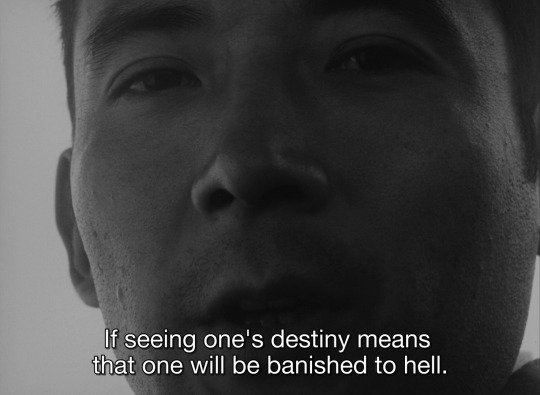


Akio Jissoji
- This Transient Life
1970
#実相寺昭雄#無常#Akio Jissoji#THIS TRANSIENT LIFE#japanese film#atg#art theatre guild#buddhism#1970#akio jissôji
141 notes
·
View notes
Text
Understanding ACIM: A Comprehensive Guide to A Course in Miracles

Welcome to our in-depth exploration of ACIM, also known as A Course in Miracles. If you're seeking profound spiritual insights and personal growth, you've come to the right place. In this blog post, we'll delve into the essence of ACIM, providing valuable information to help you grasp its concepts, teachings, and transformative power. Whether you're completely new to ACIM or seeking to deepen your understanding, this article aims to offer clarity and guidance. Let's embark on this enlightening journey together as we uncover the key principles and applications of ACIM.
What is ACIM?
A Course in Miracles, or ACIM, is a spiritual self-study program that offers a unique perspective on life, forgiveness, and inner peace. Developed in the 1970s by Helen Schucman and William Thetford, this profound course is composed of three main sections: the Text, the Workbook for Students, and the Manual for Teachers. ACIM presents a non-denominational approach to spirituality, appealing to individuals of various religious backgrounds and belief systems.
The Core Concepts of ACIM:
Forgiveness as the Key: ACIM emphasizes the transformative power of forgiveness. It teaches that forgiving oneself and others is essential for inner healing and liberation from suffering. By releasing grievances and judgments, one can experience true peace and happiness.
Shifting Perception: ACIM invites us to shift our perception from fear-based thinking to love-based thinking. The course teaches that seeing through the lens of love dispels illusions, fostering a deeper understanding of our interconnectedness and the oneness of all things.
Illusion vs. Reality: According to ACIM, the physical world is an illusion, while the spiritual realm represents reality. By recognizing the illusory nature of the material world, individuals can detach from its transient nature and connect with their true, eternal selves.
How ACIM Works:
The ACIM curriculum is structured as a year-long program, with each day dedicated to a lesson in the Workbook. Through daily affirmations and practices, students gradually undo the ego-driven mindset and embrace a more spiritually enlightened perspective.
As ACIM employs a distinctive metaphysical language, some find it challenging initially. However, consistent study and application lead to a profound shift in consciousness, helping individuals transcend fear, guilt, and attachment to the material world.
The Impact of ACIM:
Over the years, ACIM has touched the lives of countless individuals, offering them a pathway to spiritual growth, self-awareness, and inner peace. Many practitioners have reported experiencing profound positive changes in their relationships, personal well-being, and overall outlook on life.
The Global Reach of ACIM:
With its universal principles and teachings, ACIM has gained a substantial following in the United States, the United Kingdom, and beyond. Its inclusive nature and focus on spiritual truth attract seekers from diverse cultural backgrounds, fostering a harmonious and interconnected community.
Tips for Incorporating ACIM into Daily Life:
Consistent Practice: Dedicate time each day to study the ACIM lessons and reflect on their meaning. Consistency is key to internalizing the teachings and experiencing their profound impact.
Joining Study Groups: Engaging in ACIM study groups or online communities can provide valuable insights and support from like-minded individuals on the same spiritual journey.
Applying Forgiveness: Practice forgiveness in your daily interactions, whether with yourself or others. Embrace the healing power of letting go of past grievances.
Meditation and Reflection: Regularly take time for quiet contemplation, meditation, or journaling to deepen your understanding of ACIM's teachings and their relevance to your life.
Conclusion:
A Course in Miracles offers a transformative and spiritually enriching journey for those seeking inner peace and personal growth. Its teachings on forgiveness, perception, and the illusory nature of reality resonate with individuals from all walks of life. As you immerse yourself in the world of ACIM, remember to approach the course with an open heart and mind. Embrace the daily practice, and you'll discover a profound shift in your perspective and experience the miracles of life. May ACIM guide you toward a life filled with love, joy, and purpose.
1 note
·
View note
Text
The Seedy History of “Three Studies on Human Desire” - Part 2
If you haven't had a chance to check out the first part of this series, check it out to get an introduction to transient poety Thomas Fuchs and his mysterious piece Three Studies on Human Desire.
The Mystery of Bourghaine Street
In the first part of this series, we introduced a poetic triptych authored by the elusive Thomas Fuchs. In this chapter, we will begin to dig into the mysteries unleashed by these poems that have tormented historians of Depression era New York City since these poems first became discovered in 1962.
The most pervasive thread to tug at among the many frayed fibers dangling from this minature epic is the question of the very existence of the Bourghaine Street district, animated with visions of vice and debauchery by the author. There is, at least, evidence that this destination was not a complete fabrication of Fuchs. Other journals and manuscripts had mentioned such a place, albeit with a panoply of variations, some of which are clearly inconsistent. Nonetheless, there were reasons, during the beginning of scholarship around this work, to take seriously the prospect that this was a real place.
At the same time, a cursory look at the New York City subway map, today or during any part of its well-recorded history, reveals no stop on the A train, or any train for that mattered, adorning the name Bourghaine Street. There are two stops today named Bergen Street suggesting that one of these was known as, or misrepresented as, Bourghaine Street. It is possible that the mythic oasis of iniquity was around either of these stops during the 1920's and 1930's, long since abandoned, or something along these lines (no pun intended).
With this in mind, one can only really look at the evidence available and form a scholarly inference about this legendary place.
The Fourth Poem
Although the triptych, true to its form, only contained three poems, a fourth was found later in the 1970's, through a series of amusing accidents, which appears to have been written by Fuchs during the same period. It's possible, and debated, that the author may have been some other writer of the time, caught up in the same culture of alcohol and transience that marked Fuchs existence, spent very frequently indulging in the Bowery, but either way it gives one cause to doubt that Bourghaine Street was more than a metaphor of the streets; a fantasy rendered in the depths of depression depravity.
Below is the fourth poem in full, thanks again to CUNY's archives:
In the Bowery, where the down and out reside, Where desperation is a constant tide, Where life is cheap and vices abound, A dream of escape can often be found.
A rumor spreads of a subway stop, Where one can indulge until they drop, Bourghaine Street, where vices reign, And men are caught in the throws of pain.
The A train rattles down the line, Passing by stops of a mundane kind, But with each station, the promise grows, Of a grotesque land where anything goes.
The train pulls into Bourghaine Street, And the scent of sin is oh so sweet, The neon signs light up the night, Guiding the transient to their delight.
Opium dens and gambling halls, Bootleg booze in the backroom stalls, Prostitution and speculation, All are catered to without hesitation.
The transient is led by provenance's hand, To this promised land of sin so grand, Ascending to the grotesque sublime, As all around him men lose track of time.
But as the night wears on and the sun begins to rise, The dream fades away, the promise dies, ? For Bourghaine Street was never real, Just an opium-fueled fantasy to feel.
And so the transient returns to the Bowery, Back to the reality of his misery, Wondering if Bourghaine Street was ever there, Or just a figment of his opium-stained air.
On one hand, it is tempting to take this as a clear verification that Bourghaine Street was naught but a work of imaginative fiction; a refuge for the down-and-out; a place sung about in folk songs and of hung-over day dreams. But one could argue that it is also possible that the dream-like qualities of Bourghaine Street leave its visitors doubting its existence the day after, awakening on the streets somewhere in strange, with brandy on their breath and their memories in shambles. It's possible that the unreality of this place was part of its very reality, and thus we cannot be so quick to dispell (as some scholars did), the possibility that this was a real living, breathing space worthy of deeper interrogation.
The Frederick Letter
If in reading this account, you have begun to take sides on this enticing mystery, the next twist in the historical plot will be particularly thrilling. In 1979, an astonishing discovery served to bring more clarity to the question of the existence of Bourghaine Street. A letter from a priest, known only as Frederick was written to a companion known only as Smythe. Who these people were remains a cold case, and might forever be, but notwithstanding, whoever Frederick was, he seems to have given a convincing account of having visited Bourghaine Street, an experience that apparently shook him to his core.
Here is the Frederick Letter in full
Dear Smythe,
Today, I found myself lost in the subway system of Brooklyn. Despite being a man of God, I cannot say that I was not at least a little curious about the notorious Bourghaine Street, which I had heard so much about from the sinners of my parish. And so, as fate would have it, I accidentally got off at Bourghaine Street.
The scene that met my eyes was one of utter horror and disgust. Everywhere I looked, there were men and women indulging in every vice imaginable. There were gambling dens, opium dens, bootleg liquor establishments, and even brothels. The air was thick with the scent of depravity and sin.
As a priest, I could not help but view the scene with the keen eye of an anthropologist. It was fascinating to observe the depravity of human nature in such an unabashed and unfiltered form. But as I watched, a sickening feeling began to grow in my stomach.
I realized with terror that the spectacle of debauchery was arousing me. I felt my body respond to the sights and sounds of Bourghaine Street in a way that was entirely inappropriate for a man of God. I was filled with guilt and confusion about my own feelings, wondering how it was possible for such darkness to arouse me.
As I stumbled back to the subway station, I could not help but reflect on the warning that this experience offered. Places like Bourghaine Street are not merely a curiosity; they are a gateway to the darkest parts of our souls. They are the embodiment of temptation and sin, and they have the power to corrupt even the most virtuous among us.
I would suggest that at the very least, the subway stop be renamed to Bergen Street. It is a name that is more dignified and respectable, and it may serve as a reminder of the dangers that lurk in the shadows of our world.
Frederick
Detractors of the theory that Bourghaine Street was a real place have disputed the authenticity of this letter, even going so far as to accuse their opponents of having committed forgery. In some respects, it seems all too convenient that this letter popped up so soon after the tides had shifted in the small academic circle that had devoted serious interest into this kind of thing. But it is hard to not take this account seriously since it is indisputable that this was not written by Fuchs, nor was it in line with all of the poetry and other artful renderings of Bourghaine Street. It would be an uncharacteristically Modernist move for someone within the circles of alcoholic transients frequenting the Bowery to have embarked on such an eliptical project.
Finally, the ultimate paragraph of the letter seems to confirm in some weird way the suspicion that Bourghaine Street was (or at least is now) Bergen Street. It is unclear why Frederick would have made this recommendation. Perhaps, the nearby street was always Bergen Street, the name of the staition was somehow misspelled on the signs, and Frederick beleved it should be restored to its rightful name; especially given the reputation Bourghaine had amassed by then.
For now, I will leave things here, knowing that the next post thicken the plot a bit more.
0 notes
Text
JAMES BALDWIN – NOTES OF A NATIVE SON – EXCERPTS
James Baldwin (1924-1987) was arguably one of the most potent, articulate, incisive, analytical and accomplished American social commentators of the post-World War Two era. I cannot, in all honesty claim to know with any depth, Baldwin, or his invaluable works to modern literature and social reform. He was one of those transient beings, a shooting star, if you will, like David was, who while he glided ever so brightly, yet tentatively, through the night’s sky, never failed to mesmerize and also to taunt us with the sureness of his fated path, and mission. Such was Baldwin to me, when as a teen in the 1970s, I first came upon tiny, yet enervating bits of his essays on American society, more precisely to that never-quite-outed horrors of slavery and its unmistakable corollary - to be black and seemingly, never whole.
Recently, I had a yearning for Baldwin. Or perhaps his uniquely-engendered narratives to the ills which plagued American society. There are, I feel, legitimate reasons for this urgent dialing for Baldwin. The world, as we experience it in present times, has rapidly unified, or to put it bluntly, regimentally uniformed, as a consequence of a variety of factors, among which the concerted and prolonged global covid lockdown recently was but its latest and perhaps, most destructive manifestation. Baldwin, like Nobel Prize recipient, Albert Camus through his anti-fascism and anti-totalitarian novel, The Plague, of which we had featured tentatively on this website not long ago, cautions us, the reader, to be mindful especially of the bitterness and hatred which may first inhabit and then explode within our self, as a result of our failure or reluctance to address, in whole, the question of social injustice within our society. In this aspect, Baldwin feels history has to be reworked and retold, with all its unpalatable gory, and less about its mythological glory in apparent partnership with faith-founded charity.
Notes of a Native Son, which was published in 1955 could have been one of those stingingly voluminous essays imitated from the Victorian era, but which instead, in the masterful hands (and mind) of Baldwin, was delicately and artfully compressed, like an accordion, to 21 pages or so, to produce the most surreal, yet unimpeachable enactment of racial relations in America within the context of African-American family life and social structure. It continues to amaze me to this day, that Baldwin was not awarded the Nobel Prize for Literature for his works. Nevertheless, nothing is ever cast in stone which cannot be removed or deleted as an afterthought. To this end, the Nobel Prize Committee is encouraged herein to consider a posthumous award to Baldwin. His literary works to this day continue to inspire and impel many, including this writer, to confront injustice and social inequality anywhere, without equivocation. There are numerous excerpts of the essay which are worthy of sharing here. However, these few, I am convinced should suffice to lay bare Baldwin’s philosophically-mined, yet socially amenable beliefs :
“When he died, I had been away from home for little over a year. In that year I had time to become aware the meaning of all my father’s bitter warnings, had discovered the secret of his proudly pursed lips and rigid carriage. I had discovered the weight of white people in the world. I saw that this had been for my ancestors and now would be for me an awful thing to live with and that bitterness which had helped to kill my father could also kill me.” (1)
“I knew about jim crow but I had never experienced it. I went to the same self-service restaurant three times and stood with all the Princeton boys before the counter, waiting for a hamburger and coffee; it was always an extraordinarily long time before anything was set before me; but it was not until the fourth visit that I learned that, in fact, nothing had ever been set before me; I had simply picked something up. Negroes were not served there, I was told, and they had been waiting for me to realize that I was always the only Negro present.” (2)
“Perhaps the most revealing news item, out of the steady parade of reports of muggings, stabbings, shootings, assaults, gang wars and accusations of police brutality, is the item concerning six Negro girls, who set upon a white girl in the subway because, as they all too accurately put it, she was stepping on their toes. Indeed she was, all over the nation.” (3)
“Perhaps the best way to sum all this up is to say the people I knew felt, mainly, a peculiar kind of relief when they knew that their boys were being shipped out of the south, to do battle overseas. It was perhaps, like feeling the most dangerous part of a dangerous journey had been passed and that now, even if death should come, it would come with honor and without the complicity of their countrymen. Such a death would be, in short, a fact with which one could hope to live.” (4)
“It began to seem that one would have to hold in the mind forever two ideas which seemed to be in opposition. The first idea was acceptance, the acceptance totally without rancor, of life as it is, and men as they are: in the light of this idea it goes without saying that injustice is a commonplace. But this did not mean that one could be complacent, for the second idea was of equal power: that one must never in one’s own life, accept these injustices as commonplace but must fight them with all one’s strength.” (5)
Sources/References
1. Baldwin : Collected Essays. p65. Edit. Toni Morrison, Library of America, 1998
2. Ibid. p69
3. Ibid. p73
4. Ibid. p74-75
5. Ibid. p84
0 notes